Skilled Nabataeans Celestially Aligned Petra’s Wonderful Architecture
AncientPages.com - Evidence for ancient and prehistoric astronomy exists but most of it is indirect and rather hidden.
The Nabataeans watched the sky systematically and accurately and the proof of their astronomical observations can be found in Petra's celestially aligned buildings.
During the winter solstice, the sun is filtered into the Monastery at Petra, Jordan, illuminating the podium of a deity. Just at this moment, the silhouette of the mountain opposite draws the head of a lion, a sacred animal.
These are examples from a study where researchers from Instituto de Astrofisica de Canarias and CSIC (Spain) showed how celestial events influenced the orientation of the great constructions of the Nabataeans.
The movement of the Sun in the skies of Petra - perhaps the most spectacular ancient city - determined the way in which the monuments of this and other Nabataean cities were erected.
Scientists from Instituto de Astrofisica de Canarias (IAC) and CSIC, Spain, and the University of Perugia (Italy) have analyzed the spatial position of the Nabataean's palaces, temples, and tombs.
Their results indicate that those Great buildings were erected bearing in mind the equinoxes, solstices and other astronomical events that determined the Nabataean religion.
The Nabataeans prospered in the first century BC and the first century AD in what is now Jordan and neighboring countries.
The Nabateans are mentioned about the beginning of the Christian era as a race distinguished for their astronomical and general knowledge. It is supposed that they were the ancestors of the ancient Babylonians and Chaldeans.
During the winter solstice the light of the setting sun illuminates the podium of the Monastery at Petra, from where the silhouette of a lion's head is made out on the opposite rocks / Credit: J. A. Belmonte - A. C. González-García
"The Nabataean monuments are marvelous laboratories where landscape features and the events of the sun, moon and other stars interact," Juan Antonio Belmonte, researcher of IAC and coordinator of the study, stressed to SINC.
See also:
Astronomically Aligned Temples And Pyramids Of Ancient World
Unclear Purpose Of Mysterious Rock-Cut City Of Petra - Was It A Fortress Or Sacred City?
"The astronomical orientations were often part of an elaborate plan," he added "and, possibly, a mark of the astral nature of their religion, which showed incredible 'hierophanies' or demonstrations of the sacred on monuments related to cultic times and worship".
A clear example is seen in Ad Deir, the Monastery at Petra. During the winter solstice, the light of the setting sun entering through the gate of the monument illuminates the sacred motab. It is a podium where some stone blocks, which represent divinities such as the god Dushara, are placed.
"The effect is spectacular, and would have only been observable during the few days closest to this solstice," commented Belmonte, who also emphasizes how, just in this moment, another curious phenomenon is produced.
As observed from the motab itself, the setting of the sun recreates the aspect of the head of a lion, the animal of the Nabataean goddess Al Uzza, on the opposite rocks.
Sunset phenomenology in the western horizon (a) related to the solstices and the equinoxes as seen from the Urn tomb enclosure (b). Our data suggest that the site and the internal distribution of the monument were deliberately chosen with an astronomical objective in mind. Adapted from Belmonte et al. (2013a)
Mathematical calculations also show the astronomical plan that the Urn Tomb follows, another famous monument where king Malichus II is thought to be buried. Its main gate is centered with its environment according to the equinox sunset when the day equals the night, and the solar rays during the summer and winter solstices establish the two interior corners of the building.
"This amazing set of three alignments within the plan of the tomb, in combination with significant features in the distant horizon, can hardly be ascribed to chance," underlined Belmonte. "We consider that it is a deliberate attempt to convert the hall of the Urn Tomb into a type of time-keeping device".
When in 446 AD the Christian Bishop Jason converted the Urn Tomb into the Cathedral of Petra, the solsticial markers also served as a reference in determining Christmas Eve (24 December) and St. John the Baptist (24 June), the date on which the monument was consecrated to the new religion.
Research published in 'Nexus Network Journal'
AncientPages.com
More From Ancient Pages
-
 TB Was Transmitted in South America – DNA Study Shows How It Happened
Archaeology | Mar 17, 2022
TB Was Transmitted in South America – DNA Study Shows How It Happened
Archaeology | Mar 17, 2022 -
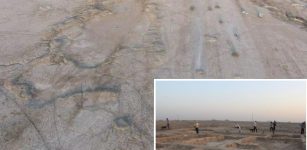 Large 4,000-Year-Old Sumerian Port Discovered In The Desert In Iraq
Archaeology | Apr 4, 2018
Large 4,000-Year-Old Sumerian Port Discovered In The Desert In Iraq
Archaeology | Apr 4, 2018 -
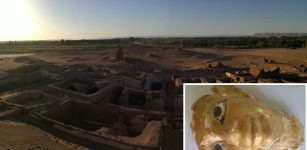 Five Ancient Roman Tombs With Different Architectural Style Discovered In Egypt
Archaeology | Aug 26, 2017
Five Ancient Roman Tombs With Different Architectural Style Discovered In Egypt
Archaeology | Aug 26, 2017 -
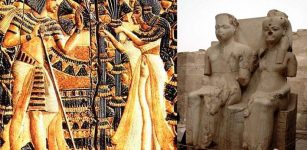 Ankhesenamun – Mysterious Death Of Tutankhamun’s Wife Ended The True Amarna Bloodline
Featured Stories | Mar 23, 2018
Ankhesenamun – Mysterious Death Of Tutankhamun’s Wife Ended The True Amarna Bloodline
Featured Stories | Mar 23, 2018 -
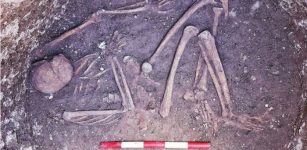 Rare Iron Age Crouch Burial Discovered At The Margate Caves Site In Kent, UK
Archaeology | Mar 8, 2018
Rare Iron Age Crouch Burial Discovered At The Margate Caves Site In Kent, UK
Archaeology | Mar 8, 2018 -
 Curious Encounter Between Inuit And Vikings Led To Something Surprising That Shaped History
Featured Stories | Aug 4, 2024
Curious Encounter Between Inuit And Vikings Led To Something Surprising That Shaped History
Featured Stories | Aug 4, 2024 -
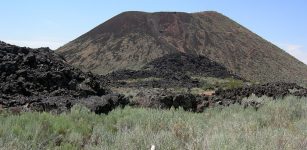 Something Surprising Happened With Temperature Since The Start Of The Holocene – New Study
Archaeology | Oct 10, 2022
Something Surprising Happened With Temperature Since The Start Of The Holocene – New Study
Archaeology | Oct 10, 2022 -
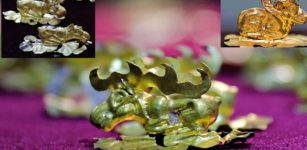 Gold Dated To Scythian-Saka Era Unearthed In Valley Of The Kings In East Kazakhstan
Archaeology | Sep 14, 2020
Gold Dated To Scythian-Saka Era Unearthed In Valley Of The Kings In East Kazakhstan
Archaeology | Sep 14, 2020 -
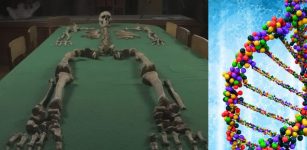 DNA Reveals Stone Age People Avoided Inbreeding
DNA | Mar 9, 2024
DNA Reveals Stone Age People Avoided Inbreeding
DNA | Mar 9, 2024 -
 Evidence Vikings Had Windows With Glass Panes Already Between 800 And 1100
Archaeology | Oct 11, 2023
Evidence Vikings Had Windows With Glass Panes Already Between 800 And 1100
Archaeology | Oct 11, 2023 -
 Earliest Ochre Crayon Used By Our Ancestors 10,000 Years Ago Found In Yorkshire, Northern England
Archaeology | Jan 29, 2018
Earliest Ochre Crayon Used By Our Ancestors 10,000 Years Ago Found In Yorkshire, Northern England
Archaeology | Jan 29, 2018 -
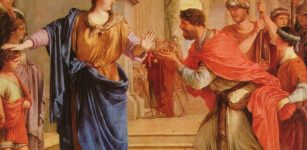 Ars Amatoria – Ancient Roman Flirting Tips – Could They Still Work?
Featured Stories | Mar 26, 2019
Ars Amatoria – Ancient Roman Flirting Tips – Could They Still Work?
Featured Stories | Mar 26, 2019 -
 Coyote: Hero, Trickster, Immortal And Respected Animal In Native American Myths
Featured Stories | May 10, 2016
Coyote: Hero, Trickster, Immortal And Respected Animal In Native American Myths
Featured Stories | May 10, 2016 -
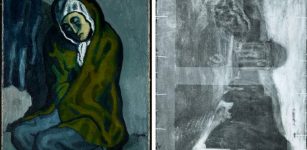 Hidden Details Discovered In Picasso’s Painting The Crouching Woman
Archaeology | Feb 28, 2018
Hidden Details Discovered In Picasso’s Painting The Crouching Woman
Archaeology | Feb 28, 2018 -
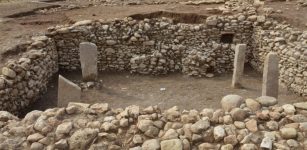 Temples At Boncuklu Tarla Are Older Than Göbekli Tepe And Re-Write Ancient History
Archaeology | Dec 10, 2019
Temples At Boncuklu Tarla Are Older Than Göbekli Tepe And Re-Write Ancient History
Archaeology | Dec 10, 2019 -
 Mystery Of The ‘Mummified Mermaid’ In Japan Solved!
News | Feb 19, 2023
Mystery Of The ‘Mummified Mermaid’ In Japan Solved!
News | Feb 19, 2023 -
 Is A Viking Settlement And An Even Older Church Hidden Under St. Clement’s Church In Norway?
Archaeology | Apr 13, 2017
Is A Viking Settlement And An Even Older Church Hidden Under St. Clement’s Church In Norway?
Archaeology | Apr 13, 2017 -
 Mystery Of Doppelgangers And Spirit Doubles – From Ancient To Modern Times
Featured Stories | Sep 16, 2014
Mystery Of Doppelgangers And Spirit Doubles – From Ancient To Modern Times
Featured Stories | Sep 16, 2014 -
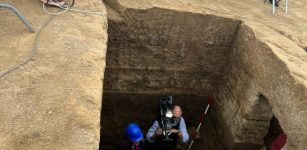 Intact 2,600-Year-Old Etruscan Tomb Opened In Vulci- Exceptionally Rare Artifacts Found Inside
Archaeology | Oct 31, 2023
Intact 2,600-Year-Old Etruscan Tomb Opened In Vulci- Exceptionally Rare Artifacts Found Inside
Archaeology | Oct 31, 2023 -
 World’s Oldest Shipwreck Discovered In Mediterranean
Archaeology | Apr 10, 2019
World’s Oldest Shipwreck Discovered In Mediterranean
Archaeology | Apr 10, 2019



